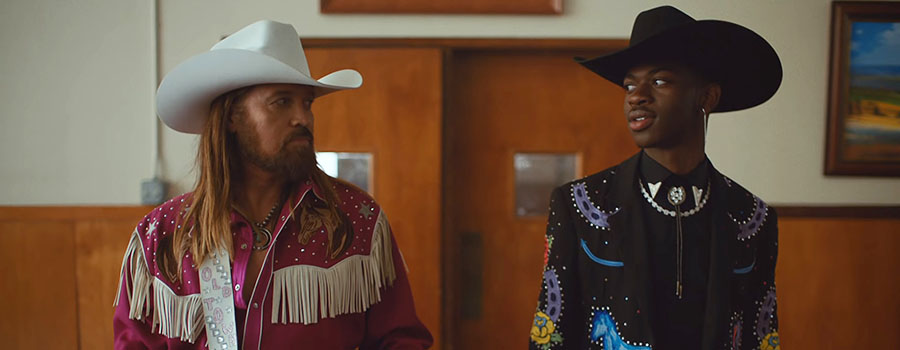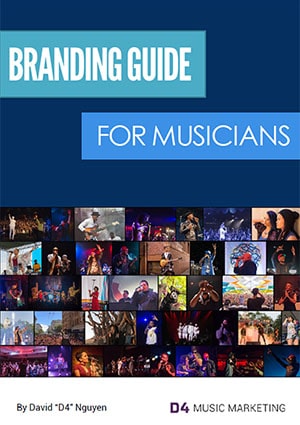
It seems like every year, there’s a story of some young artist who blows up because of a song going viral. This year, it is the college dropout, turned rapper Lil Nas X (Montero Lamar Hill), who took over the world with a country trap song called “Old Town Road” at the age of 19.
As of this writing, the remix of the song has been streamed 400+ million times on Spotify alone and has stayed on Billboard’s Top 100 for 17 weeks straight. This officially beats the Billboard record for the longest a song has been at number 1.
The Atlanta artist ended up signing a record deal with Columbia Records and has released an EP so far through the label. He has become a music star, posting photos on his Instagram hanging out with the biggest names in music and culture.
He also claimed to have intentionally created “Old Town Road” so that it would go viral. Did this rapper, who only started rapping since May 2018, in fact, figure out the secret to going viral?
In case for some strange reason you have not heard the song yet, here is the video for the remix version with Billy Ray Cyrus that took over popular culture:
Stories like this are always interesting to dissect. Even if you’re not trying to go viral, there are definitely things you can learn and apply to your own career.
In this blog, I share his back story and all my thoughts that I think other musicians should learn from his viral success.
The Back Story
Before the Country Hot 100 controversy, where Billboard decided that the original version of the song didn’t meet the criteria to be categorized as country, “Old Town Road” was actually becoming a viral hit on its own.
The surprising thing about Lil Nas X’s rise to fame is that he started rapping for less than a year before blowing up. Within that span of time, Lil Nas X released about 16 tracks on his SoundCloud (his older songs have been removed by the label), including the original viral hit “Old Town Road” that he posted on December 3, 2018. Most of his songs didn’t get much attention compared to the funny memes, unrelated to music, that he would post.
“Old Town Road” first came about when Lil Nas X bought the beat from a Dutch teen Young Kio through a website called beatstars.com for $30 dollars. The banjos in the song, sampled from a Nine Inch Nails song, inspired him to write a song with a “loner cowboy runaway” vibe that reflected his current life situation.
Side Note: If you want to learn more about the story of the song from the perspective of the young producer who made the beat, Young Kio, you can check out this article.
Lil Nas X deliberately wanted to make a viral song. He spent the whole month of November writing the song and released it early December. A couple of days after the release, he sent the below tweet:
twitter please help me get billy ray cyrus on this pic.twitter.com/UDoeiOZqc1
— nope (@LilNasX) December 5, 2018
As we are all aware of now, the irony of the tweet from this unknown kid in Atlanta at the time was that he did get Billy Ray Cyrus on the track months later.
By marketing and promoting his song through numerous memes, “Old Town Road” reached the top 50 Country list on SoundCloud around December 19th:
OLD TOWN ROAD IS TOP 50 COUNTRY ON SOUNDCLOUD!! pic.twitter.com/vtstydGpnU
— nope (@LilNasX) December 20, 2018
In February;, Lil Nas X first uploaded the “Old Town Road” to the short-form video app TikTok. This really helped the song take off.
By March 16th of this year, “Old Town Road” was generated enough streams to make its way into the Billboard charts at number 19. This is where the controversy began and took his viral success to the next level. Billboard disqualified the song because it “does not embrace enough elements of today’s country music to chart in its current version.”
Lil Nas X then signed a deal with Columbia Records and got Billy Ray Cyrus on the remix of the song, which allowed it to be on the Billboard Country charts in April.
That was an overview of what happened in case you were not familiar with his story. We’ll get into the details.
What exactly did Lil Nas X do to go viral?
As I mentioned earlier, Lil Nas X claimed he purposely wrote “Old Town Road” to become a viral hit. A lot of times songs that actually go viral aren’t done so intentionally. However, this may be an exception.
He crafted the song around cowboy culture, including the title itself, and injected western lingo throughout the lyrics. Unlike the other songs he put out that didn’t do well, it was the first time that he wrote a song to formulate a viral hit.
According to Lil Nas X, the viral song had to be:
- Short
- Catchy
- Quotable, with fun lines and lyrics that people want to use as captions
- Used in memes
Once it came out, he promoted the song nonstop by retweeting horse and cowboy memes with the song from his friends and followers. From there, it slowly caught on a couple of months in.
I tried digging up his old tweets as examples of how we went about promoting “Old Town Road” and these were what I found. I’m sure there was a lot more, but this should give you a good idea of the memes he was creating:
good morning buckaroos lets get this mf cattle ?⚡️ pic.twitter.com/MYhVTMeamD
— nope (@LilNasX) December 12, 2018
country music is evolving pic.twitter.com/BEZIw3TE8l
— nope (@LilNasX) December 3, 2018
— nope (@LilNasX) December 21, 2018
Although there are other factors outside his control that went in his favor that allowed the song to become the global hit (discussed below), he spent a lot of time pushing and promoting the song. In other words, the song didn’t just magically catch on, there was work being put behind it.
Next, I’ll go over 6 key factors that allowed Lil Nas X to go viral that you can learn and adapt in some way to your own career.
1. Make a “good” song.
With all this being said, it leads to one of the first principles of virality – practical value. It is one of the 6 research based principles for something to go viral, according to marketing professor and bestselling author Jonah Berger.
Another way of saying it is, without the story, hype, controversy and memes, is the song likable as it is? Does the song provide some sort of value or benefit to the listener?
It sounds obvious, but it’s easy to let your own personal biases about your music get in the way of what you think is good or not good. The producer who made the beat to “Old Town Road” actually said it was his “throwaway beat,” yet it was good enough to later become one of the hottest songs in our culture. It works both ways.
The point here is that your song needs to be good at whatever it is you’re trying to accomplish. Lil Nas X wrote the song to be fun and entertaining so it could go viral. Clearly, he accomplished that. Without the song actually being catchy and quotable, could the song have become the global hit that it became? I would doubt it.
How do you know if your music is “good”? You promote it the best you can and see how people respond. After all, something that is considered “good” is very subjective to different audiences. You need to make sure you put in the proper time and work to get your song out there to the right audience to see if it’s good and resonates with people. Just posting it on SoundCloud or Spotify is not enough, especially when you haven’t established yourself yet.
At the very least, you should:
- Get your friends and network to help promote it
- Share it with your community (if you don’t have one, find one)
- Post it on all your channels using the right hashtags
- Pay for Facebook, Instagram or YouTube ads
- Reach out to influencers and content creators
Lil Nas X clearly knew he had a good song, and you can read the responses from his old tweets indicating that people liked the song when he first started promoting it on Twitter.
When influencers, with large followings of their own, reach out to you to use the song because they know it’ll make them look good if they shared it, you know you have something good. This was what helped “Old Town Road” go viral and leads to the next point.
2. Get people talking about you with a good story.
Whenever I first hear about an artist that has gone viral, it has always started the same way.
When my friend first introduced me to Post Malone’s White Iverson, he said, “Check out the video with this goofy looking white guy who thinks he’s like a white Allen Iverson”.
When another friend introduced me to Rich Brian, he asked me to guess the race of the rapper based on just the music without seeing the video.
The same thing happened with Lil Nas X when a friend asked me, “Did you hear about how this black kid wrote a viral country trap song and was kicked out of the Hot 100 Country Billboard list?”
All of these cases were through word of mouth when I learned about them in person. I didn’t ask my friends to introduce me to music. There was something interesting, funny, surprising or different about the artist that they felt inclined to share with me.
Why is this important? It’s this concept of social currency.
In subtle ways, we share things based on how something makes us look and how others will perceive us. Social currency is what helps make the person who shares something look good or valuable to the other person they are telling it in a social context.
For example, if I share a really funny video with you, it makes me look good if you really like it because it puts me in a positive light in how you perceive me. If I tell you about a hot, upcoming artist you never heard of who becomes really famous it makes me look good when I introduce you to them. This is because it demonstrates that I have good taste in music or that I’m in the know.
When it comes to virality, you need to do or create something that carries social currency so it’s worth mentioning through word of mouth and sharing with others.
On top of good music, there needs to be some other element, like a good story, that makes people feel inclined to talk about it with others. Humans are hardwired to be receptive to stories. Notice how in the cases above, it never started with “check out this really good song.” There’s always more to it.
To see the power of story in this particular case, let’s look at Google search trends.
You can see that Lil Nas X didn’t really go super-viral until March when the controversy with Billboard occurred. From then, that’s when he really took off. The story about the Billboard controversy generated so much social currency that the media, news and blogs all had to share.

Lil Nas X on Google Trends
We can’t give Lil Nas X credit for the story aspect as I’m sure he didn’t anticipate his song charting on the Hot 100 Country list and getting kicked off before teaming up Billy Ray Cyrus.
However, as covered earlier, Lil Nas X did other things that led up to this point and deserves credit for. This comes to show that you really can’t control virality as much as it seems. If you do things right knowing what you know in this blog, you’ll be in a better position to do so.
These are the principles that power of word of mouth marketing and fuels virality. We all know that when you can spark discussion or better yet, debate and controversy, that is how things can really spread. This leads to the next principle.
3. Generate debate / controversy and evoke emotions
Is it country? Is it rap? Is it country trap?
Is “Old Town Road” not country enough? Or was Billboard being racists because the artist is a young black kid from Atlanta?
These are the types of questions that got people thinking when the song was first disqualified from Billboard’s Hot 100 Country list. I would argue it was the big catalyst that allowed the song to see the type of success that it did.
When looking at it more broadly, there’s often an emotional component to things that go viral. Then, when you get people triggered by controversy, emotions get entangled even more, which creates a perfect storm.
From my understanding, race in country music has been an ongoing issue for quite some time. When issues of racism and cultural appropriation get into the mix, it’s bound to cause some debate.
Although Billboard denies it had anything to do with race, there have been other white Country music artists who incorporated elements of hip hop into their beats and production techniques. Examples are artists like Florida Georgia Line and Sam Hunt.
This doesn’t necessarily mean you should do extreme things that are controversial just to get attention. People who try different things and push the boundaries may naturally generate some discussion or debate. This leads to the next point.
4. Trying something new or different.
When I say this, it doesn’t mean it has to be something no one has thought of or tried, because combining country and rap is not new nor is “country trap.” Lil Nas X has helped to put this sound on the global stage, but he credits Young Thug for pioneering Country Trap. The influence of country music in hip hop music has been around for quite some time.
For Lil Nas X, “Old Town Road” was completely different from anything he put out before. He came across the beat and was inspired to try something he never did in his short career in music.
With so many people doing the same thing, you have to be willing to experiment and take artistic risks. It doesn’t have to be something that has never, ever been done before, but hopefully, it’s refreshing and creative. There’s power in combining or blending things that don’t normally go together or uncommonly done.
And of course, there are risks involved because it doesn’t always mean that everyone will like it. That’s why it makes the reward worth it if you have something special, as it can be the fuel you need for exposure. Post Malone is a good example of this as well.
“I believe whenever you’re trying something new, it’s always going to get some kind of bad reception.” – Lil Nas X
Having heard this story, I’m sure people are inspired to do their own genre crossover in hopes to get exposure. Don’t force it though, because I feel people can sense it. But if you ever come across an idea or opportunity to make something different or uncommon, do it.
5. Incorporate Visuals (Video / Memes / Dances)
Another element that all things that go viral seem to have in common is some visual component. Things that have gone viral, at least from what I can recall, was never just a song. There was always some video attached to it.
As mentioned in my blog on virality, one of the core principles of virality is when something is public, which I would extend to say something we can visually see.
With Lil Nas X, there were visual elements:
- Videos
- Dances
- Memes
When Lil Nas X first released “Old Town Road,” he created some visuals to go with the song. The first was a “music video” with the song synced up to some clips from the video game Red Dead Redemption 2.
A couple weeks after, he created a lyric video using video game clips as well.
These are nothing spectacular, but it got the job done. It comes to show that you don’t need high production videos, but it should complement the song and the goal you want to accomplish with it.
The other visual component that he credits for helping to promote the song were the memes. Some of them were shared above. He had a knack for making memes, and knew that it was a powerful way to market his song. Memes are a big vehicle for virality and attention because they essentially are designed to trigger shares or retweets.
Because he purposely created and promoted his song with a cowboy theme in mind so it was easy to establish the visuals for it.
However, what took the song to the next level was when it caught on to the video-sharing app TikTok. For weeks, people were dancing to his track while dressed up in cowboy attire. We should all be familiar with the power of dance attached to certain songs and how that can catch on quick.
It should be no surprise that visuals or things that are in the public eye help are a crucial mechanism for virality.
This leads to the final point about virality.
6. Capitalize on what’s trending online.
One of the big cultural trends that took off at the time when “Old Town Road” was released, which worked in his favor, was the Yeehaw Agenda.
What started out as memes, the Yeehaw Agenda became a movement of appropriating cowboy fashion and culture as seen with many celebrities rocking various cowboy aesthetics.
On top of this cowboy style trend, the song also gained traction on the social network app TikTok as a part of the #YeeHawChallenge where people would dress in full cowboy attire and dance to “Old Town Road.” It quickly became the soundtrack and anthem of this cowboy movement. This is what allowed it to climb up various streaming charts and led to the Billboard controversy.
An influencer on TikTok known as @nicemichael reached out to Lil Nas X to use his song and claims he was the first one to use “Old Town Road” in one of his videos. After he posted a video of him dancing to his song as a cowboy to his 123k followers on TikTok, which created a wave of people doing the same thing for weeks on the platform.
@nicemichael how’s this for a country boy #foryou #funny #dance #countryboy ♬ Old Town Road – Lil Nas X
Did Lil Nas X create “Old Town Road” knowing that he could capitalize on the YeeHaw Agenda? Possibly.
The big lesson here is to keep a pulse on what’s going on in the news, culture, world events and social media. Attention is the currency of the digital age. If there’s something trending that has people’s attention, it might be an opportunity for you to capitalize on it if it makes sense for your brand.
Another principle of virality that Lil Nas X had successfully implemented has to do with this concept of triggers.
A good example and explanation of triggers is from one of the early viral internet songs “Friday” by Rebecca Black. Because of the song’s association with the day Friday, many people shared it and used it as memes once a week all on the same day. Yup, when Fridays came around, this triggered people to think about the Rebecca Black song, which was what helped the song and video become a viral hit.
With Lil Nas X, he successfully created a song that would associate with “Old Time Road” when they were triggered through cowboy memes and fashion.
Conclusion
So did Lil Nas X really figure out virality? Yes, but it’s nothing we didn’t already know.
As I’ve laid out in this blog, he did everything that one would need to do to go viral, but there were a lot of other factors out of his control that went in his favor to be successful with “Old Town Road.” With some luck, every piece needed for the song to take off lined up perfectly.
The reason why I don’t advocate for going viral is that it’s not as easy as it seems and you’re not in full control of the outcome. It’s like trying to become a millionaire by spending all your money on lottery tickets every week. Lots of people get caught up in wanting overnight success and growth hacks because they are impatient. The chances are never in your favor, which is why you shouldn’t solely focus on going viral.
A big takeaway from this blog is to be aware of what’s going on in culture and around your own life. With the virality principles in mind, know when to capitalize on certain trends and opportunities that make sense for you. Knowing the mechanisms of virality should help you maximize the potential exposure of everything you do to help get you where you want to be just a bit quicker, even if it’s not to be a viral superstar.
If you want to read more about virality, check out this blog I referenced throughout this blog:
Going Viral: 6 Research Based-Principles to Increase Music Exposure







